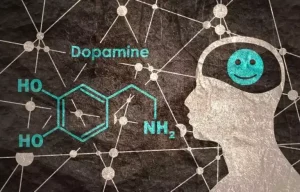How psychedelic drugs may help with depression National Institutes of Health NIH

Exploring patient experiences can increase our understanding of underlying therapeutic mechanisms and processes, the role of (extra)pharmacological factors in these treatment modalities, which may contribute to optimizing treatment context, and lead to improved clinical responses and personal benefits. Despite the heterogeneity of substance, setting, and population, these studies also suggest that, in addition to a shared phenomenology, psychedelic treatments exhibit similar therapeutic processes and result in comparable outcomes. As this review demonstrates, qualitative research of psychedelic treatments can contribute to distinguishing specific features of these compounds, and show potential for elucidating otherwise undiscovered implications for the treatment of distinct mental disorders. To quantify how well the nodes were directly connected to other nodes in the network, centrality measures were estimated. Table S3 in the Appendix presents the raw and standardised centrality estimates for node connectedness in the Acute Model. The six most central nodes in the Acute Model, in descending order of raw estimates, indexing different components of psychological flexibility / inflexibility were Self-as-Context (0.93), Cognitive Fusion (0.85), Values (0.85), Inaction (0.80), Committed Action (0.75), and Acceptance (0.68).
Critical Appraisal of Study Quality
- We used the mgm package40 to estimate a Gaussian Graphical Model (GGM) partial correlation network and to obtain predictability or R2 estimates of each node in the network.
- Networks can be estimated using many different methods; however, the most common method involves the estimation of partial correlation coefficients from covariance matrices29.
- “With the typical way esketamine is used, folks are told to ignore the psychedelic effects as a side effect, which is the opposite of true psychedelic therapy where one is encouraged to pay attention to the altered state of consciousness and try to learn from it,” says Johnson.
- On the basis of clinical-trial data, the US Food and Drug Administration (FDA) designated psilocybin a breakthrough therapy for major depressive disorder and treatment-resistant depression8.
On this view, access to such drugs should be a recreational right, like access to alcohol, cigarettes, and increasingly cannabis. As with cannabis, medical use may be expected to promote wider discretionary use for any reason. A bipartite model of serotonergic functioning focused on the effects of post-synaptic 5-HT1AR and 5-HT2AR signaling.
Brain-controlled bionic limbs are inching closer to reality
Dr. Boris Heifets, an anesthesiologist and co-director of the exploratory therapeutics laboratory at the Stanford University School of Medicine, said the therapy’s potential for a broad range of mental health conditions is remarkable. The scale consists of 7 items that are based on diagnostic criteria A, B, and C for generalized anxiety disorder from the DSM-5; American Psychiatric Association, 2013). Participants rated how often, in the past two weeks, each of the symptoms bothered them on a scale ranging from 0 (“Not at all”) to 3 (“Nearly every day”). The items were averaged to produce a single score, with higher scores reflecting greater levels of symptoms of anxiety.
How psychedelic drugs may help with depression
People with a history of mania, severe heart disease, or psychotic disorders such as schizophrenia should not be considered for psychedelic therapy, Johnson says. “The effects of a ketamine infusion for therapy are felt within a few minutes,” continues Dr. Radowitz, and can last hours to weeks. Effects include deep relaxation, a sense of ease and peace and altered consciousness (feeling separated from your body, experiencing vivid daydreams or visual patterns or revisiting past experiences). A Schedule I drug, LSD (lysergic acid diethylamide), or acid, was first created in 1938 in Switzerland.
Psychedelic therapy: a roadmap for wider acceptance and utilization
However, in the 1970s they were categorized as schedule I controlled substances, which are said to have “no currently accepted medical use and a high potential for abuse”; this blocked mainstream https://ecosoberhouse.com/ research on these compounds for decades. The social, economic, and public health impacts of untreated mental disorders demand solutions. If psychedelic therapies do prove to have enduring effects after just a single or a few administrations in the context of a few sessions for preparation and integration, they have the potential to offer not just a new approach to mental health care, but an entirely new paradigm of care.
In addition to writing for Everyday Health, her work has been featured in WebMD, SELF, Healthline, A&E, Psych Central, Verywell Health, and more. Her goal is to compose helpful articles that readers can easily understand and use to improve their well-being. She is passionate about healthy living and delivering important medical information through her writing. “For clinical indications, psychotherapy appears to be necessary to support and facilitate change,” says Danovitch. “There is evidence that the brain becomes more flexible or ‘plastic’ after a psychedelic,” says Johnson.
- The PoMS was originally developed to measure happiness in a Chinese cultural context, where more value is placed on inner harmony as opposed to “high arousal positive affect” states (e.g., feeling excited, elated); however, the scale has also been shown to work well in a Western cultural context34,35,36.
- Compounded by the diversity of substances and heterogeneity of treatment contexts, it could be argued that this review compared orchard-grown apples with indoor-cultivated oranges.
- So far, it has been shown that treatment response measured 5 weeks after psilocybin treatment in patients with MDD was predicted by decreased connectivity between the PFC and the parahippocampus increased connectivity between the PFC and the inferior parietal cortex, 1 d after psilocybin administration.
- Together, these data substantiate the potentials of these compounds in treating mental diseases.
- Acceptance-based cognitive-behavioural therapies are prevalent in psychedelic-assisted psychotherapy due to their non-directive nature12,13,52.
- The mean scores of the twelve subscales were calculated, with higher scores reflecting a greater degree of psychological flexibility or inflexibility, respectively.
- Respondents also gained crucial insights into their behavior towards others with regard to relationships with friends, family or partners 78, 82.
Moreover, the comparative risks and benefits of MDMA and psilocybin versus other novel psychiatric treatments, such as ketamine and various neuromodulation techniques, remain unknown. Psilocybin, for example, has demonstrated rapid and sustained antidepressant effects without tolerance or dependence in trials so far. Compared with ketamine, whose effects wear off after a few weeks of treatment, often requiring repeated dosing and carrying the risk of dependence and tolerance, psilocybin may carry a more favorable risk–benefit profile, though more research is required to definitively determine this. For MDMA, one pontential major comparative advantage is its efficacy in dissociative PTSD, an area for which psychiatry has relatively few effective pharmacological treatments. Whether or not these effects will translate into a treatment of dissociation more generally remains unknown.

We were primarily interested in patient experiences, therefore, as our primary data, we took the results sections of all articles, including the categories and subthemes identified by the articles’ authors. Second, these codes were examined for similarities and differences, and were rewritten with a higher level of (psychological) abstraction into themes. Finally, these themes were subsequently reanalyzed and grouped together by all authors, based on conceptual similarities; these clusters comprised major themes and were given a descriptive label.

Psychedelic-assisted psychotherapy has garnered large amounts of attention in recent years as the next potential breakthrough treatment for psychiatric illnesses. Despite unprecedented levels of are psychedelics addictive psychopathology worldwide, the field of psychiatry has produced relatively few novel interventions in recent decades. Globally, depression is a top five cause of disability, affecting about 5% of the world’s population 1, while PTSD has a global prevalence of 3.9%, with high-income countries having a higher burden of PTSD compared to low-income countries 2. Psychedelic-assisted psychotherapy offers the hope of a new treatment whose rapid onset and enduring efficacy could outpace that of other psychiatric treatments.
Clinical Studies in Healthy Volunteers

See Table S4 in the Appendix for full raw and standardised centrality estimates for the Frequency Model. A revamped interest in the study of hallucinogens has recently emerged, especially with regard to their potential application in the treatment of psychiatric disorders. In the last decade, a plethora of preclinical and clinical studies have confirmed the efficacy of ketamine in the treatment of depression. More recently, emerging evidence has pointed out the potential therapeutic properties of psilocybin and LSD, as well as their ability to modulate functional brain connectivity.

